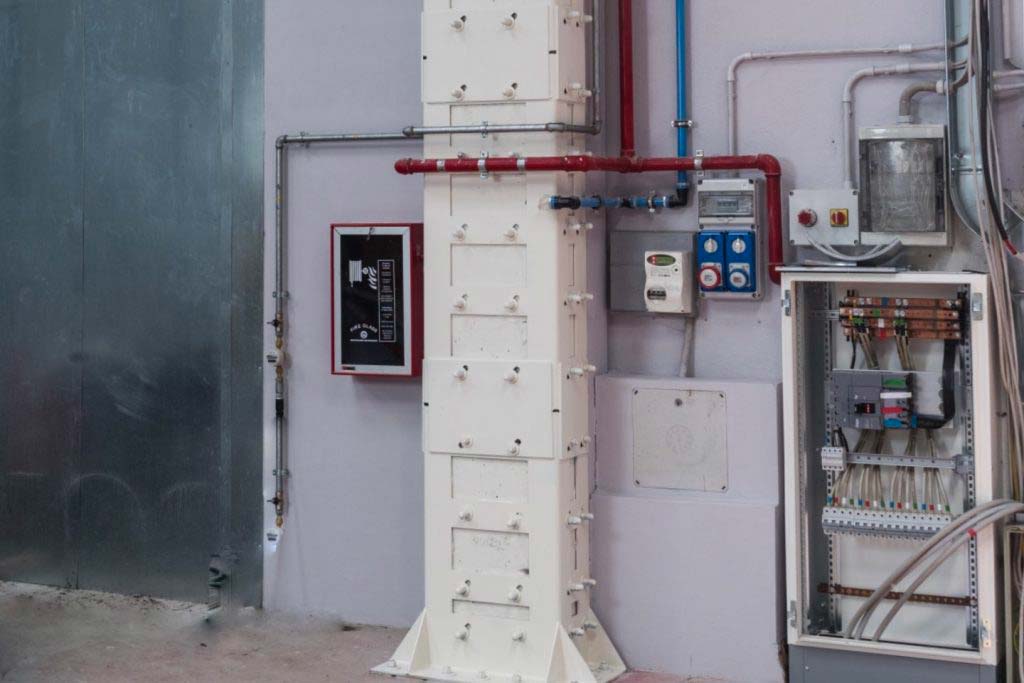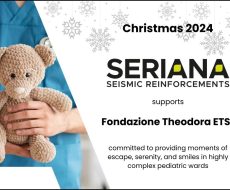
May 6, 2021
Seismic improvement: from modelling to column reinforcement
The design and execution of make-safe and seismic improvement work on buildings is our core business. With our up-to-the-minute know-how and team of experts, nothing is left to chance. Each job is planned and carried out according to the individual features and characteristics of the structure requiring the work.

Seismic improvement
Before we start, there is a distinction to be made between seismic improvement and make-safe work, or local earthquake strengthening. The latter consists in securing the reciprocal connections between structural elements and between these and the non-structural elements in order to prevent local failure mechanisms. Seismic improvement work is instead aimed at increasing the building’s overall safety level by means of techniques designed to increase its earthquake resilience.
Modelling
The first, essential step in determining the type of seismic improvement work to be done on the structure consists in the virtual construction of a finite element model (FEM) representing the existing building.
The purpose of this kind of modelling is to assess the behaviour of the building’s various elements should there be a seismic event.
The designer uses dedicated software to simulate the “design” earthquake, namely the earthquake that can be expected for the site in question. This enables the designer to analyse the actual stresses acting on the structure and relevant movements, and to determine on what parts of the building the stress is greatest. The main elements studied during the seismic analysis stage are the vertical members, which are generally those responsible for the building’s actual earthquake resilience.
Based on the findings, the designer comes up with a series of measures and verifies their efficacy through a second FEM analysis. The process is repeated until the predetermined level of earthquake safety has been reached: this means that the designed measures will effectively minimize the risks should there be a seismic event, and hence the proposed work can be given the go-ahead.
Column reinforcement
One of the remedial techniques used to improve the building’s earthquake performance consists in strengthening any columns that have shown a low level of resilience to the stress applied to them. Column reinforcement is a traditional measure performed on reinforced concrete structures and, despite the fact that both materials and application techniques have evolved, the principle behind the work is still to increase the capacity of the existing member, integrating it with a new bonded structure.
Seriana S.p.A. offers two reinforcement methods, depending on the failure mechanisms to be addressed and based on the actual feasibility of installation taking into account the operating conditions on site.
Reinforced concrete jacketing
The first type of reinforcement is reinforced concrete jacketing, which is designed to enlarge the column’s cross-section for greater strength. It consists in adding reinforcing bars, integrating them with the existing rebar with suitable connections, and completing the job with self-compacting cast-in-place concrete in order to enlarge the column’s cross-section for greater strength.
Steel jacketing
The second type of reinforcement is steel jacketing, which consists in surrounding the column with a continuous cylinder (plates) or discontinuous jacket (straps) in order to increase the capacity of the existing member, while not significantly increasing its size and rigidity.
The decision between the two types is determined by the team’s engineers and technicians, working with the client, based on the characteristics of the structure and the actual feasibility of installation on site.
Ampacet (Bergamo), Roncadelle Operations (Brescia) and OMB (Brescia) are some examples of companies where Seriana S.p.A. has successfully completed column reinforcement projects.
We pride ourselves on always bringing to the table a full complement of know-how, expertise and skill in the earthquake strengthening industry, enabling us to achieve top levels of satisfaction and the best result in terms of safety and seismic improvement.






